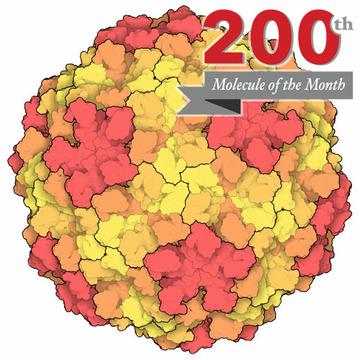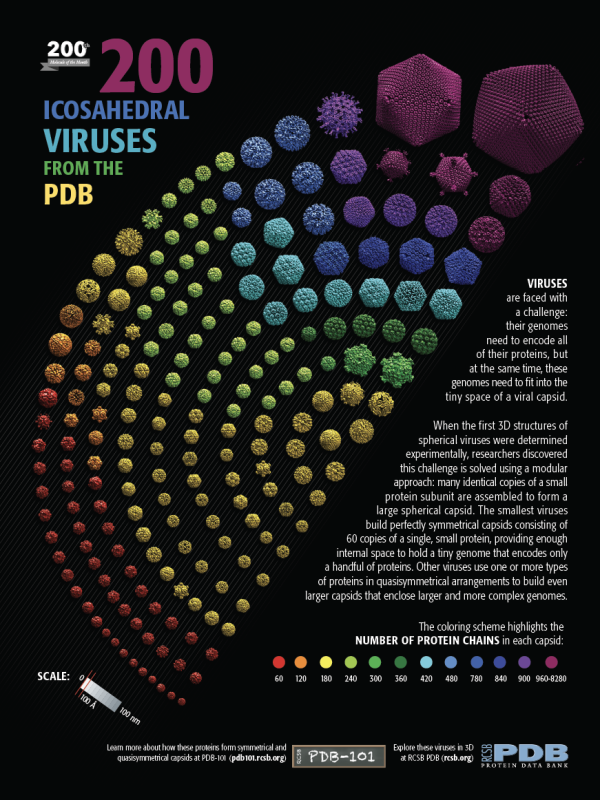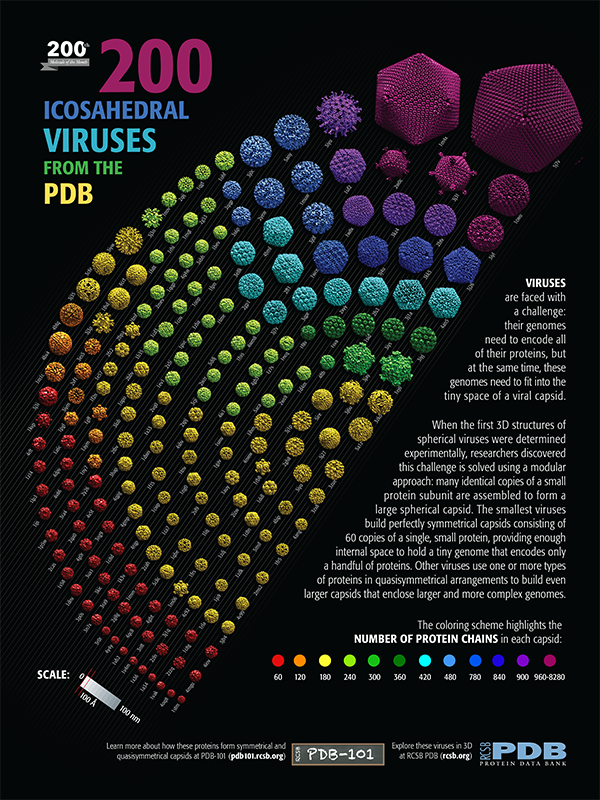
Viruses are faced with a challenge: their genomes need to encode all of their proteins, but at the same time, these genomes need to fit into the tiny space of a viral capsid. When the first 3D structures of spherical viruses were determined experimentally, researchers discovered this challenge is solved using a modular approach: many identical copies of a small protein subunit are assembled to form a large spherical capsid. The smallest viruses build perfectly symmetrical capsids consisting of 60 copies of a single, small protein, providing enough internal space to hold a tiny genome that encodes only a handful of proteins. Other viruses use one or more types of proteins in quasisymmetrical arrangements to build even larger capsids that enclose larger and more complex genomes.
The coloring scheme highlights the number of protein chains in each capsid:

Other resources: Molecule of the Month on Quasisymmetry in Icosahedral Viruses and related paper model building activity.






